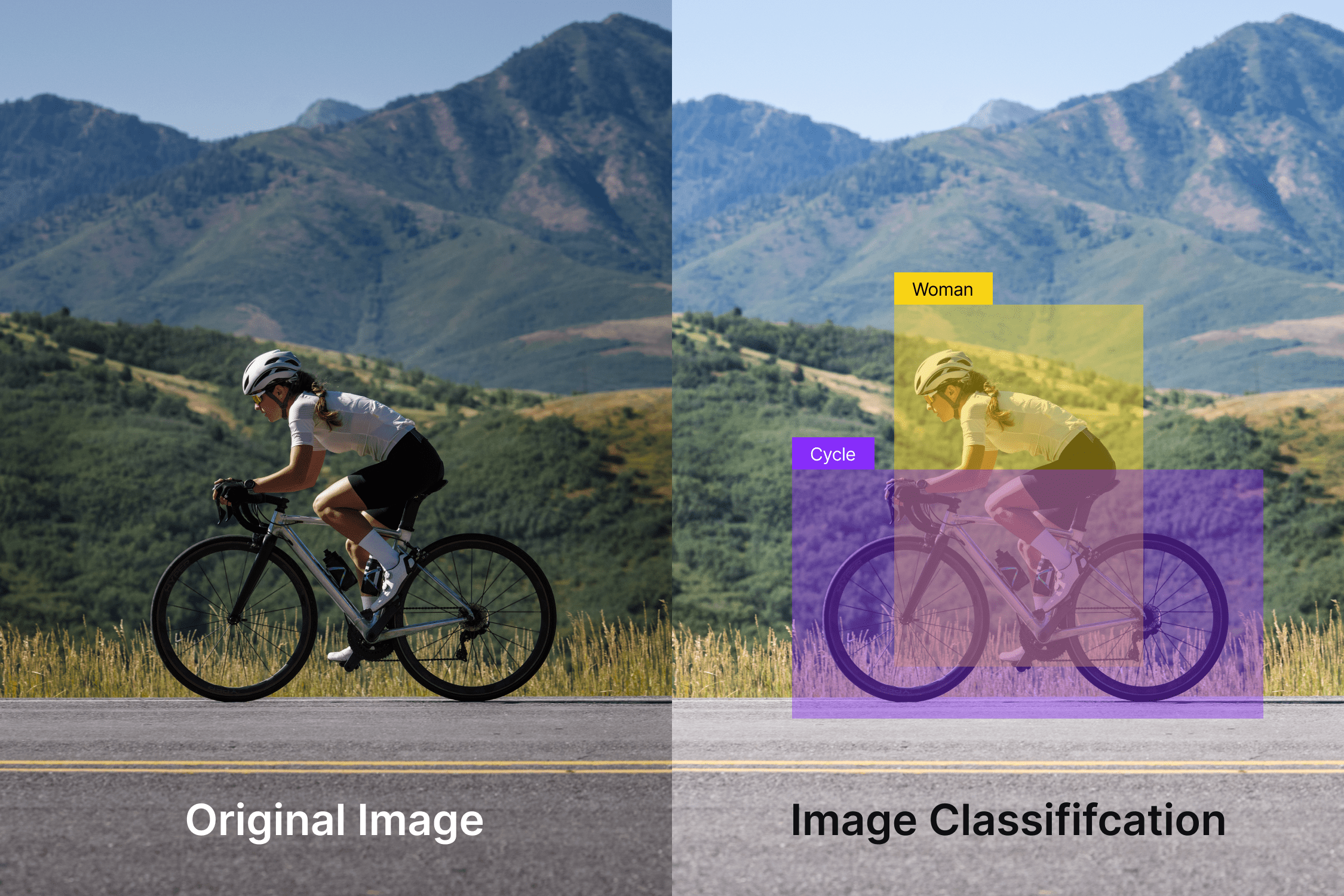
adminMarch 20, 2023Uncategorized
Image classification technology has diverse applications from medical imaging to satellite image analysis. Starting from healthcare, banking, and manufacturing to entertainment, image classification is proving to be more efficient and productive. The image classification process involves the use of one or more spectral or textural characteristics to categorize and label groups of pixels within an image which improves processes, eliminate repetitive tasks, and impact growth in many sectors. In this article, we discussed the impact of image classification on different industries.
Image Classification in Healthcare
Image classification is a vital task in healthcare that involves analyzing medical images such as X-rays, MRIs, and CT scans to analyze and treat patients with better care. By leveraging image classification techniques, healthcare providers can quickly and accurately diagnose diseases and medical conditions, such as cancer, pneumonia, and heart disease. The use of image classification in healthcare has led to more precise diagnoses, earlier detection of diseases, and improved patient outcomes. Additionally, it has reduced healthcare costs and enabled healthcare professionals to provide timely and personalized treatment to their patients.
Image Classification in Transportation
Image classification enables the automation of several processes, such as object detection and tracking, traffic analysis, and safety inspection. With the help of machine learning algorithms, transportation authorities can train computer vision systems to recognize and classify images of vehicles, pedestrians, and other objects captured by cameras and sensors installed on roads, bridges, and tunnels. These systems can then analyze the data and provide valuable insights into the traffic flow, vehicle, and pedestrian behavior, and potential safety hazards. Image classification also plays a vital role in autonomous vehicles, as it enables them to navigate and make decisions based on the objects and situations they encounter on the road.
Image Classification in Agriculture
With the help of image classification, farmers can quickly and accurately identify crops that require attention, monitor plant growth, and predict yield, ultimately leading to better harvests and improved efficiency. The use of image classification technology in agriculture is still in its early stages, but it has the potential to revolutionize the way we grow and manage crops, increasing productivity and reducing waste.
Image Classification in Forestry
Image classification is a powerful tool in forestry management that enables researchers and forest managers to analyze and monitor large areas of forest cover using satellite imagery. This technique involves using computer algorithms to automatically categorize images into different land cover classes, such as forests, grasslands, water bodies, and urban areas. The resulting maps can provide critical information on forest cover change, deforestation, and forest health over time. By accurately identifying different types of forest cover, image classification can help to guide sustainable forest management practices and protect critical ecosystems.
Image classification in Defense & Military
Image classification algorithms use machine learning techniques to automatically analyze images and classify them into different categories, such as vehicles, buildings, and people. These algorithms are capable of detecting subtle differences and patterns in images, which may not be visible to the human eye. With the help of image classification, defense, and military organizations can identify potential threats, track enemy movements, and monitor activities in a given area, which can significantly enhance situational awareness and aid in making critical decisions.
Image classification in Retail
Image classification is a crucial task in the retail industry as it enables businesses to extract valuable insights from visual data. By using machine learning algorithms, retailers can analyze images of their products and customers to gain a deeper understanding of consumer behavior and preferences. For instance, image classification can be used to identify the color, style, and size of items in inventory, which can help retailers optimize their supply chain and manage their stock levels more efficiently.
Image Classification in Food Processing
By analyzing the digital images of food, machine learning models can distinguish between various food items, enabling businesses to automate processes such as quality control and inventory management. This technology can be particularly useful for companies that deal with large volumes of food products, allowing them to streamline their operations and reduce the risk of errors.
Image Classification in Manufacturing
Image classification is a powerful tool used in manufacturing to enhance product quality, increase efficiency, and reduce costs. By analyzing images of products or manufacturing processes, machine learning algorithms can accurately identify defects or anomalies and alert operators in real time. With image classification, manufacturers can automate tedious and error-prone tasks, reduce waste, and improve product consistency. Moreover, the data generated from these processes can be used to identify trends and optimize operations, leading to increased productivity and profitability.
Image classification in Security
In security applications, image classification can be used to identify objects of interest, such as weapons, explosives, or even people who are on a watchlist. This can be particularly useful in airports, public transportation systems, and other high-security areas where potential threats need to be detected and neutralized quickly.
Image classification in Traffic Management
Image classification algorithms allow traffic management systems to automatically detect and classify vehicles based on their size, shape, and color. This information can be used to monitor traffic flow, detect traffic violations, and optimize traffic light timings. By using image classification, traffic management systems can improve safety and reduce congestion on the roads, making it a vital tool for modern transportation infrastructure.
Image classification in Waste Management
By using image classification, waste management companies can train machine learning models to identify and sort different types of waste, such as plastics, paper, and metals, with high accuracy. This technology not only improves waste sorting efficiency but also reduces human error and promotes recycling efforts.
Image classification in Insurance
Using machine learning algorithms to automatically classify images, insurance companies can accelerate the claims process, reduce manual errors, and provide more accurate estimates to their customers. Moreover, this technology also helps insurers detect potentially fraudulent claims by analyzing images for signs of tampering or inconsistency. As a result, image classification is becoming an indispensable tool for insurance companies to improve their efficiency, reduce costs, and enhance customer satisfaction.
Image classification in Geology
In the field of geology, image classification is used to classify and map different landforms, such as mountains, rivers, and coastlines. This helps geologists identify areas with high mineral potential, monitor natural hazards, and track changes in land use over time. Overall, image classification is a crucial tool for geologists to understand and manage the Earth’s natural resources and environment.
Image classification in Textile Industry
Image classification technology has made it easier for textile manufacturers to streamline their production processes, reduce errors, and improve quality control. One of the image classification applications involves identifying and categorizing different textile products based on their images. By training machine learning models on large datasets of textile images, it is now possible to accurately classify different types of fabrics, patterns, and colors.
Image classification in Sports Analysis
With advanced machine learning algorithms, it is now possible to automatically categorize images based on their content, allowing analysts to identify key events and players on the field. For example, by analyzing video footage of a soccer game, an image classification model can identify goals, fouls, and offside incidents, providing valuable data for coaches and players alike. Similarly, in basketball, image classification can be used to track player movements and identify scoring opportunities.
Image classification has versatile applications for every industry and is set to play an even more significant role in the future. As the technology continues to advance, we can expect to see more and more industries adopting image classification algorithms to improve their operations, increase efficiency, and drive innovation.
DeepLobe offers a range of pre-built computer vision models, including object recognition, image segmentation, image classification, OCR, and more, that you can leverage in real-time. Our pre-built models can provide quick and efficient solutions for various use cases. However, we understand that each industry has its unique requirements, and therefore, we also offer custom model development services tailored to your specific needs. If you’re interested in exploring the possibilities of vision AI or want to learn more about DeepLobe, our team is here to guide you through a free consultation.
